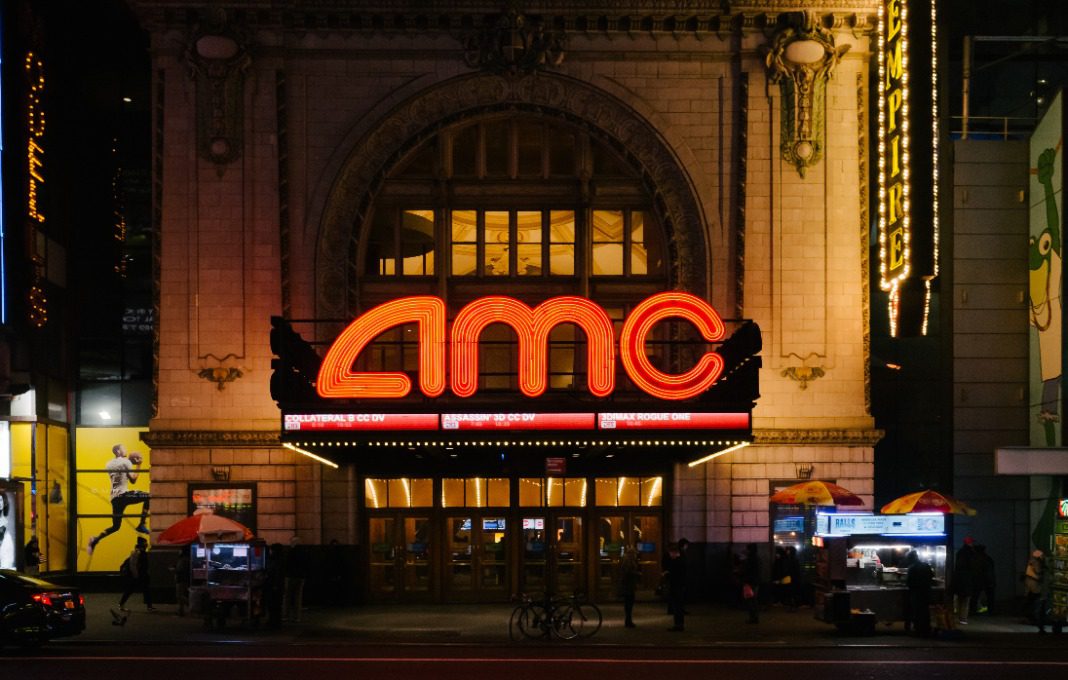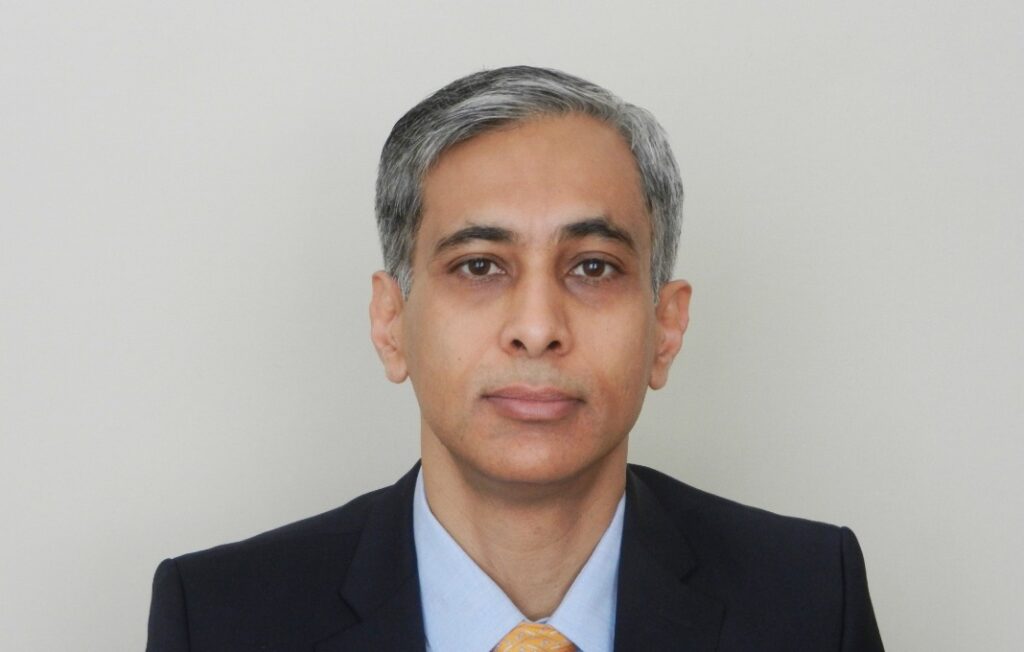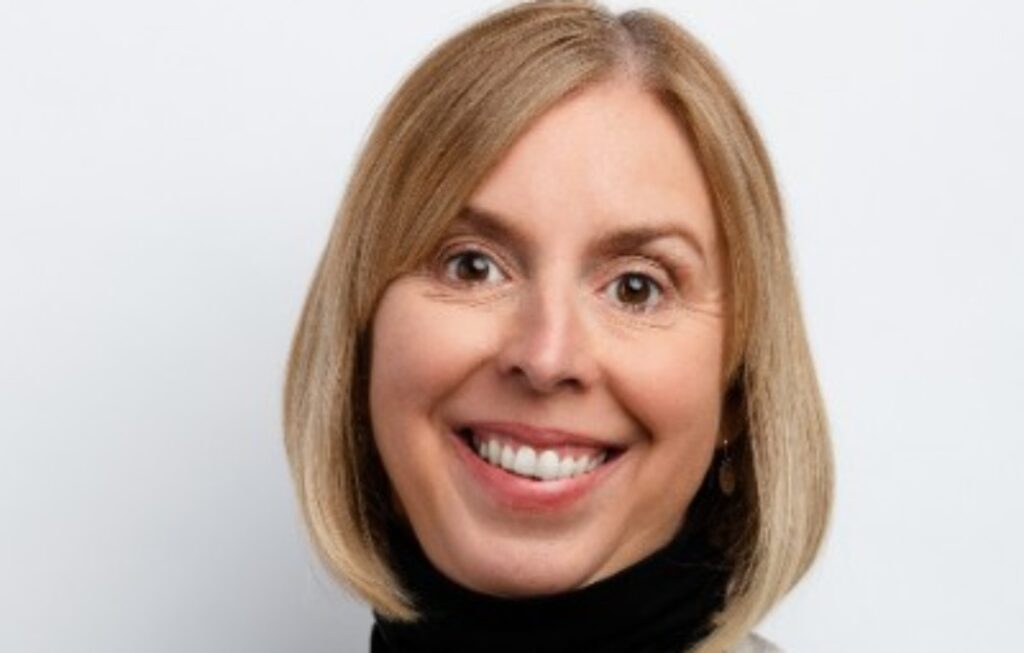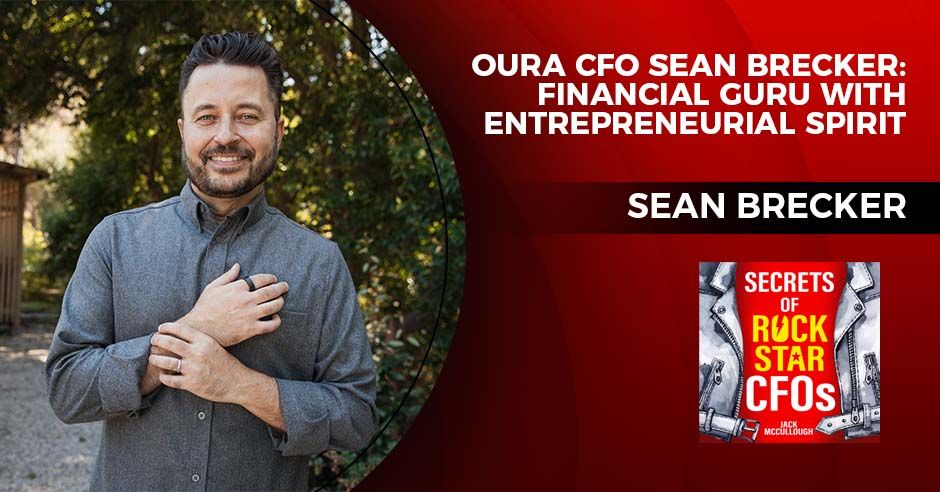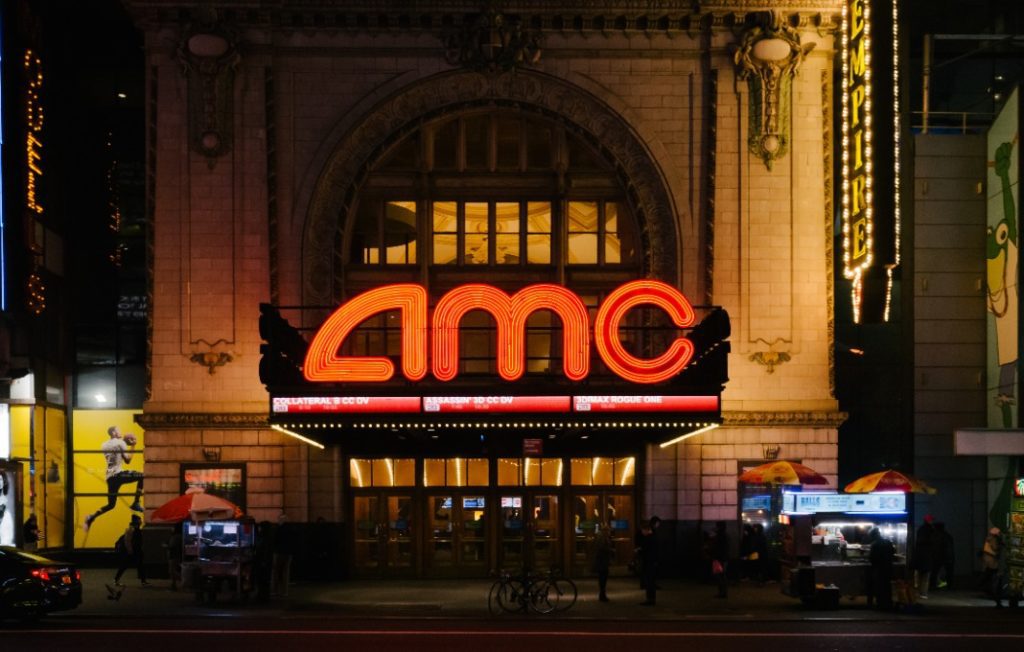
The pandemic created thousands of business survival stories, but none more improbable—and riveting—than that of AMC Entertainment, the world’s largest theater chain. At our recent Strategic CFO Forum, Adam Aron, chairman and CEO of AMC Entertainment, took us the behind-the-scenes on how he and his CFO Sean Goodman kept the firm out of bankruptcy—and why—and shared his thoughts on lessons learned for every leader.
In part two of this two-part series, Aron shares the story of how the company avoided bankruptcy—against all odds—and found its way back from the brink.
I want to take one step back to the really big question: Why did you not go bankrupt? It’s America. There’s no shame in Chapter 11, right? You get washed, you come out the other side. A lot of companies have gone into Chapter 11 with far less compelling tales of woe than the world’s largest theater chain in the middle of a global pandemic. Why didn’t you guys go into bankruptcy proceedings?

Well, you said there’s no shame in bankruptcy, but let me tell you something, there is no joy in bankruptcy either. The bankruptcy court is not a fun place to be. I’m an executive who’s used to making decisions. If we had gone into bankruptcy, I would have to run every single decision by a bankruptcy judge. In addition, you know, we were very well advised. We had Weil, Gotshal as our attorneys. We had Alvarez and Marsal at our side in case we needed them in bankruptcy. Even they would tell you that when you’re in bankruptcy, the fighting between the creditor groups, it’s a zero-sum game. That’s not a relationship crowd. It’s a transactional crowd. And they’re all playing for the last penny. So you spend a tremendous amount of time in bankruptcy court yelling at people and being yelled at. You spend a lot of time arguing about nickels, you spend a lot of time arguing about pennies. Yes, lots of companies can go through a bankruptcy process and get cleansed. You can get rid of some of your debt. You can get rid of some of your bad…in our case some of our bad theater leases.
But a lot of people are hurt in bankruptcy. Like, for example, all of our shareholders. Like, for example, not our first-lien debt holders, but our second-lien debt holders. And I had a fiduciary obligation to those people to do what I could to save their investment in our company.
We mentioned I ran Norwegian Cruise Line back in the early 1990s. Put aside that the pandemic has put them on their backside too, but pre-pandemic it was a very successful company. But back when I ran it, it was a turnaround situation and we were living with the threat of bankruptcy every day for the three years I ran that company before we accomplished the turnaround. We accomplished that turnaround without having to go into bankruptcy.
I remember telling my board in the spring of 2020 that I didn’t put my first company in a bankruptcy that I ran when I should have, and I’ll be damned if I’m gonna put the last company I’m gonna run into bankruptcy when I should have.
If you’ll indulge me one humorous story: I remember the Norwegian Cruise Line days. We had a 450-page bankruptcy filing that had been written, it was sitting on my general counsel’s shelf just in case. At that company back then, we did cash flow forecasting three times a day. We came in in the morning, we had so much cash in the bank. At noon or 1:00 we had so much money we had at midday. And at the end of day, we had so much money we had at the end of the day all based on what the travel agents were booking and giving us as advanced ticket sales for the future.
We managed our cash like we distributed our checks—in the same quantity as there was an inflow of revenue to pay expenses. But we had to prepare for bankruptcy back in those days just in case. I was sitting in my office in Miami with the lead partner around the Miami office for Weil, Gotshal, who had been brought in to brief me on what it’s like to go through Chapter 11. He was telling me how wonderful an experience it was, how cleansing it all was. He’s a lovely guy, by the way. His name was Oscar Cantu.
I remember saying to him, “Oscar, I hear what you’re saying about how wonderful bankruptcy is, but how come I think…” I listened to his whole story. “How come I feel like a little 10-year-old in a schoolyard out at recess and you’re a big old fat guy sitting in a pink Cadillac right off the schoolyard and the door to the front seat is open and there’s a big thing of candy on the front seat. And you’re saying, “Come on in kid. There’s a lot of candy in this pink Cadillac. You’re really gonna have a good time.”
At the risk of hiding the more colorful ending of the story, what would have happened to me if I had gone in that pink Cadillac is probably what happens to a lot of people who go into bankruptcy court. Let’s just say it often is a successful experience for the company, but it’s not a pleasant experience for the executives even if they come out of it stronger and wealthier than they went in. And a lot of people get hurt. A lot of people get hurt. A lot of people who we had responsibilities to would get hurt. So if we had to go into Chapter 11, I would have taken us there, but I was gonna do everything in my power to prevent it if we could.
The end of the story, we didn’t go into bankruptcy and our share price has gone from $2 a share in January to $36 a share at the moment. Our debt, which was trading at 15 cents of the dollar is now trading at par. So, those people who would have been hurt in the bankruptcy process were not hurt. I’m very proud that we kept us out of bankruptcy, and would strongly encourage the CFOs on this call, if you have the choice to go in or not go in, don’t listen to all of those lawyers and accountants and investment bankers who try to lure you into bankruptcy about how wonderful it is. Because what they’re not telling you is their fee streams go up astronomically if you file for bankruptcy. AMC going into bankruptcy, we probably would have paid accountants, bankers, lawyers over $300 million in fees. And those accounts and those bankers, those lawyers, they know that. So, they give you a lot of self-serving advice that says, “Go into bankruptcy,” because they have an enormous payday if that occurs.
Take us inside the restructuring now. How did you raise money? How did you get together, do the offering, all of that on the timescale that you had? You’re a theater company. Nobody knew where we were going. The vaccines, I remember talking to you around this time, nobody knew that the vaccines were going to work. Nobody knew that this was going to reopen. How do you do the offering? How do you get money to start flowing in? What did you do?
Well, it’s not an offering, it’s offerings, plural. We did it one step at a time. Our goal was to keep pushing off collapse until such time as we could get to the other side of the pandemic. When we shut the theaters in March, people were saying we were shut for a month or two. Well, then in July, people are saying, “The theaters will all be open by Labor Day.” By August, people are saying, “The theaters will all be open by Thanksgiving.” In October, they’re all saying, “Well, they’re not gonna be open by Thanksgiving. They’ll all be open by Christmas.”
So, you say, what do you do? Number one, you offer up ridiculous interest rates because there are people who wanna take risk. And we just did it one step at a time. So, in April, we raised $500 million through just a public debt offering, but the interest rate was, like, 12%, I think. We thought that was the highest interest rate we’d ever heard of, until what we paid to raise money in December, but we’ll get there.
In July, we went through a fairly sophisticated bond exchange with our second lien holders where they put up $300 million of cash and eliminated $555 million in debt, just wiped it out, and eliminated $200 million of cash interest expense in exchange for peak interest if we raise them higher in the capital stack, so better protected on collapse.
Then in late September, we knew that we’d raised all the debt we could raise. We know we needed to raise some equity. So, of course, we went to our banks and they said, “No one’s gonna give you equity.” It’s just too risky. And we’d heard of something called an at-the-money equity offering where you sell shares in the open market. So we started with 20 million shares, not knowing what would happen. Some of those advisors, the ones who wanted to put us into Chapter 11 were telling us, “You’re not gonna raise 50 cents for this at-the-money equity race.” We said, “Well, we don’t know we’re gonna raise it until we try.” And sure enough, we raised about $50 million. So, we tried it again with another 30 million shares, and we raised more money. We tried again with another 20 million shares.
In that effort from September 29 to early November, we raised $159 million. When all the experts said, “No one’s ever tried this before. We don’t think you’ll raise more than $25 to $50 million.” Well, we tripled it.
But it was very clear the theaters weren’t gonna reopen at Christmas. New movies were still being delayed. And we remember realizing raising enough money to last another three months is just not working. We now need to raise enough money to make it all the way to July of 2021 if we’re gonna avoid bankruptcy. So, in December, we announced publicly mid-December that we were gonna try to raise $750 million in the next 6 weeks, which was really important because if we didn’t succeed, we would have to file for bankruptcy in February. Well, we didn’t raise $750 million. We raised $1.8 billion. And we not only got the financial runway to last till July of 2021, but we got the financial runway to last till the summer of 2022.
So that’s how we got there. We got there one step at a time. We paid astronomical interest rates. I remember raising $100 million in December. This was debt, $100 million in December at a 17% interest rate. And as opposed to being outraged by it, I remember I was talking CEO to CEO with the head of a hedge fund that lent us the money, and I said, “You deserve 17% because you’re taking big risk. You’re taking almost equity-type risk even though it’s secured somewhere in the capital stack.” But it all worked. We raised the money, and we’re here to tell the tale.
Along the way, you had to have a difficult, uncomfortable conversation with Wanda because they were gonna get diluted in a big, big way, actually lose their control of the company. How did you approach that conversation? Maybe this is a model for the CFOs who are listening who have to have difficult conversations with their backers sometimes. How did you approach the conversation and how did you walk them through it?
It was pretty easy, actually. I’ll tell you what the lesson is: The lesson is build up credibility when you don’t need it so you’ve got a reservoir of goodwill, and then tell the truth and don’t sugarcoat anything.
Wanda was the Chinese company that owned 50% of our stock and had 80% of the votes. And if they fell below a 30% ownership, their class A/B stock went away and they went to one vote per share, which means they would lose control. Now, mind you, before we started selling all this equity, we had 100 million shares outstanding. That was in September 2020. By June of 2021, we had 513 million shares outstanding. So, we issued 413 million shares to the public. And, yes, Wanda was diluted, and they went from owning 50% to owning 20%. And they went from having 80% of the voting stock to having 20% of the voting stock. Back in December when I said we needed to raise all this money, we expected to raise it by selling equity if we could, and we didn’t know that we could raise equity. We still had our lawyers and bankers whispering in our ear, “You’ll never raise this money. You’ll never raise it.” But we raised it.
They didn’t speak English that well and my Chinese is non-existent. So we tended to communicate in writing, which then they could hit the translate button and it would instantly translate into Mandarin. And I remember saying to them in December of 2020, I did have this reservoir of goodwill built up. And they did trust me, and I always did tell them the truth. I said, “We only have four options. We need more money if we’re gonna survive. Option one is you provide it to us,” which they knew and I knew they couldn’t do because the Chinese government, as a public policy matter, had put in currency controls that made it almost impossible for Chinese companies to get money out of the country because the Chinese government wanted those companies to spend that money at home to prop up the domestic economy, not to move into their overseas assets. So, that was option one.
Option two is we raise all this money, we’re gonna dilute you badly, you’re gonna own 20% of the company, you’re gonna lose control. And by the way, your stock price will probably quintuple, so your asset that’s worth $200 million today, it’s probably gonna be worth $1 billion if we do this and we raise the money. You’ll be diluted, but the share price is gonna go up because right now the share price is priced as if we’re gonna go bankruptcy. That’s option two.
Option three is we go bankrupt. And if we go bankrupt, the share price is going to zero and your share ownership, which is currently worth $200 million, is worth nothing. And option four is, those three ideas are the only three I have. Do you have a fourth idea? And I mean that. I said that to them.
On option one, they couldn’t get us the money and there were no hard feelings about that. They wanted to give us some money, but they just couldn’t. We knew it, they knew it.
On option four, they have no other ideas. On option three, having their asset go down towards nothing was not good for them. So, their only choice was option two. And it was not a hard conversation because we told them the truth and we laid it out in an orderly way that made sense.
I remember to this day, the response I got, which is: “do what you need to do to save the company.” And good for them. They were a very responsible shareholder. And literally, six weeks later, the stock was trading at, you know, $10 a share, and four months later, they sold out their stock at about $14 a share when it was worth $2 a share in January. So, they made seven times their money by taking the risk on us that if we diluted them and raised enough money, the company could survive and their equity value would grow.
The way you came back is remarkable. I mean, everyone’s familiar with the meme stock story and how you really caught fire that way. But take us behind the curtain a little bit. This has never happened to companies before. You’re an experienced public company CEO. What the heck are you and Sean thinking is going on here with the “Diamond Hands” and the “Silverback” and all of this stuff is going on and the stock is shooting up? What do you make in this? Because this isn’t physics, suddenly. This is some other new set of laws, right?
This was some other new set of laws. It’s sort of like that conversation I have with my cruise line buddy. You spend your whole career planning for this moment and then the moment hits. I was the chief executive officer or a senior officer of eight different companies over the span of 45 years. I sort of thought I’d seen it all and done it all. None of us were ready for this, so, we learned on the fly.
Some days we would just marvel at what was going on around us. When I got out of business school, I got an MBA at a really good business school, and I joined Pan Am right out of business school right in the middle of airline deregulation. The airline industry was chaos back then. Right now we have four major airlines, United, American, Delta, Southwest and a few small ones. Back then, there were like 40 or 50 airlines that just dropped like flies. Anybody remember Eastern and Braniff and Continental and TWA? I like to say Pan Am, may it rest in peace. I love Pan Am. But my best joke, by the way: what was the difference between the Titanic and Pan Am? On the Titanic, they had a band. At Pan Am we didn’t have a band.
But I do remember in those days as a young 25-year-old coming out of school saying there’s opportunity. You just have to kind of have your eyes open and look for it. And I did great at Pan Am. Pan Am didn’t do great, but I did great.
So, fast-forwarding to what happened between April of 2021 and now, like most of public companies, we were 80% institutionally owned a year ago. Well, now we’re 80% individually owned. We have over 4 million shareholders who have an average position of about 100 shares each, a $3,000 or $4,000 investment company, but there are 4 million. Our share price took off and we were seeing all this. And our first thoughts were, share price is rising, let’s sell equity in the market because we had been successful in September, October, November doing it. We had success in December and January doing it. So, in May, we sold enough shares of 45 million shares at $10 a share, and we were thrilled. We raised more than $450 million.
But you got dinged for some of this stuff along the way, right?
No. We didn’t get dinged. I mean, every time we put out a press release that said we raised more money, that just made people more confident in the future of the company. What was going on is some of our individual shareholders had a theory that they could squeeze short sellers. So, some of them were saying, if you’re increasing the supply of stock in the open market, that it hurts the chances of that thing happening.
But our focus was doing right for the company, not participating in various theories of how market trading might work. And we knew that the most important thing for the company was raising cash. But what’s so fascinating is, I said we raised $450 million at $10 a share in the first two weeks of May. In the last week of May, two weeks later, we raised money at $20 a share. And a day after that we raised money at $30 a share. And two days after that, we raised over $500 million at $51 a share, just four weeks after we were thrilled that we had raised $400 million at $10 a share.
So, what we did during that time is there was enormous volume and our stock share price was rising, we sold equity in the market, and we raised $1.25 billion between May 1 and June 1. And that’s a huge extra $1.25 billion of cash that we put in the bank to buttress our liquidity going forward.
I do wanna ask specifically about your relationship with your CFO. How does a CFO make themselves a better CFO for their CEO? What are some tips you’ve seen? You’ve worked with a lot of CFOs along the way. What’s really key to the job and the relationship out of your experience?
Well, first of all, you have to have the right CEO because if you have a CEO who looks down on finance, that doesn’t help. If you have a CEO who doesn’t like to hear hard truths, it makes it much harder to be a CFO. So first piece of advice is work for the right person, because if you work for the wrong person, sometimes entities fail.
But the next comment is, I would tell you all that what I did with our largest shareholder, you should do with your CEO and board. You should build up a reservoir of goodwill and always tell the truth whether that’s a hard truth or not. Because the companies in trouble don’t have time for politics. They don’t have time for bad news to be hidden. What Sean and I did together, we used to joke that we’re in the foxhole together. Like, we compared notes every day, sometimes multiple times a day. And it wasn’t just, like, how much money we have in the bank. What was our strategy? What tactics were we gonna deploy?
We knew what we had to do. We had to raise enough cash to survive and stabilize the ship so that the run rate of losses was minimized to the extent we can, and we’ve made lots of tough decisions together. But if I was ill-advised by the CFO, it wouldn’t have worked.
And by the way, I have more confidence in my CFO than just about any executive I work with. Can you imagine if I’d lost confidence in my CFO how much more difficult it would have been to save the business? And my respect for Sean, our CFO, has only grown because what a great guy to have in the foxhole with me. He’s smart, articulate, strategic, tactical, but he also pulled no punches. He told me what I needed to hear. And he looked ahead, you know, while we were living day to day, by necessity, we’re also looking ahead three months, six months, 12 months, 18 months, 24 months, 36 months. And we knew what we had to do to survive that night, but we also knew what we needed to do to survive going forward. And since we really, in my view, we raised enough cash that we are gonna survive no matter what, now we’re in the mode of not just how we survive, but how do we thrive?
In our case, we have a unique problem. Our company’s market cap, in its history, was never more than $3 billion. And our market cap today is $18 billion or $19 billion. And we don’t have the EBITDA that we had in 2019. So some people note a disconnect there, and that’s why there are so many naysayers who, you know, continue to say our share price will plummet.
But they’re looking at the company of yesterday. They’re just assuming we’re gonna bring back the same company that we had in 2019. We know what that company was worth. It was never worth $19 billion. So the question that my whole management team, but especially Sean and I are now wrestling with, is what do we do with the war chest that we’ve been entrusted with by the shareholders to transform our company so that the company that we bring back out of the pandemic is a different company than the company we took into the pandemic? How do we transform AMC to grow into that $18 billion to $20 billion valuation that we’ve had since the spring?
What are you going to do? Obviously, I’m sure you’re about the world’s largest James Bond fan at this point and probably looking forward to Dune as well. But the movie business is changing. The people-go-anywhere business is still changing. So how do you have that conversation? How do you even start structuring a strategy conversation when there are that many things just up in the air about the industry itself?
Well, in our core industry, there’s a lot of cathartic change underway. No one exactly knows how that will play out, not the CEO of AMC, not the CEO of Disney. Nobody knows how it’s gonna play out. We know it could play out a number of different ways, but only fate will determine which way it actually plays out. But no matter how it plays out, just bringing back the AMC of old is not gonna be enough to sustain our current share price. So, we’re looking at how we can transform the company. Create new lines of business based on expertise that exists within the company. Potentially use some of that cash hoard to acquire other companies, not necessarily in the movie business. But that’s the degree of specificity that I can give you in a public forum since we’re not out there yet publicly disclosed on all the ideas that we have and what roads we may go down.
Well, I do wanna ask you this because it came up when we were just chatting informally before this thing. You’re 67 or so, you’ve done this a long time, but yet you’ve been able to pivot and pivot and pivot with all of this. Why you? Why is this guy that’s toward the end of his career rather than the beginning riding the wave of meme stocks and on Twitter and figuring that out and all of that? And you had told me a story and I wish you’d repeat it about some of your early days when you were, you know, working for a hotel chain and how you kind of learned a little bit about innovation there because I thought that was very telling and very interesting.
Well, first of all, what do you mean I’m at the end of my career? Goddamnit, no.
One part of it. One part of it. Certainly, we’re all…None of us are getting younger, Adam.
I may have celebrated my 67th birthday two weeks ago, but in my head, I’m only 34. Just write it down. But speaking of when I was 34. When I was 34, I was the chief senior vice president marketing of Hyatt Hotels. I worked for a man…my immediate superior was the president of Hyatt. I worked for him for four years, and that man had a greater impact on my professional career than anyone I’ve ever met.
He told me what he demanded of me when I was hired. He said, “I want six innovations a year from you. Every other month I wanna be able to…” These were in the days when there was something existed called newspapers. Remember the newspaper? And he said, “I wanna be able to run a full-page ad in The New York Times, The Wall Street Journal, USA Today, The Chicago Tribune and The L.A. Times, I want to run a full-page ad that says, ‘Hyatt introduces blank. Hyatt announces blank.’”
So it was a formative time in my career. I got trained that innovation was a good thing. I’ve never lost that thirst for innovation. Whatever stop I’ve made along the way and, you know, some stops were short as 19 months and some stops for as long as 10 years at one company or another, I always thought of myself as a champion for innovation and change. I actually think that being a champion of innovation is a really good thing. Now, not all innovations work. Not all risks pan out successfully. But if you’re good, you know, Babe Ruth only hit .300, right? They’re not all gonna work. But enough of them will work that the totality of the effort will be worth it. So I’ve always had an innovative mindset, always trying to stay current. Interesting that since my career came up through the marketing channel I was always interested in trying to figure out the underlying psyche of the consumer.
Consumer tastes change all the time, so if you really want to know how to sell to consumers, you’ve got to change with the times. And so, fast forward to today, in April when I realized for the first time, well, this year when I realized for the first time that our institutional investors had all headed for the hills and that our company was owned by individual shareholders, we all know it’s important for our companies to talk to their shareholder bases. Every company does it. But there aren’t that many companies that are 80% owned by 4 million people. So, how do you talk to 4 million people? Well, there’s this thing called social media. And back when I ran the Philadelphia 76ers for a couple of seasons, we were in the NBA fans room and Ben Simmons showed up last night at Wells Fargo Center, so we might have a point guard in Philadelphia this year. I’d never heard of Twitter until 2011, but there was a 25-year-old advisor I had who said, “You really need to tweet as the team CEO.”
I started tweeting the fan base and I used to tweet 10 times a day for two years. So, I got into this habit of understanding how do you talk to what I then thought was a large audience. I thought a large audience then was 30,000 people, but I tweeted with them 10 times a day and had a sense of how to work Twitter.
Well, fast forward to April of 2021, my Twitter base had eroded over time, but it’s just been growing astronomically since. And in the last five months, I’ve added almost 200,000 Twitter followers, but that’s not the big number. The big number is how much my tweets are read because people on Twitter, I tweet it to them and they retweet it to their followers. I had a tweet that I issued three weeks ago that was read 6.5 million times. That’s more than the population of 32 U.S. states. I’m now tweeting every single day. I’m not tweeting 10 times a day like I did…
With a minute or so that we have left, give us a thought to the CFOs who are here. Obviously, we’re all still going through so much disruption, so much change. Give us a thought about helping their companies through all of this as we head into 2022.
Sure. So, I’m gonna give your participants in the strategic CFO forum the same advice I gave my twin sons as they entered the workforce in their early 20s. Give it your all and have the highest sense of integrity that you possibly can have along the way. These are not easy times. We’re still in the pandemic. My company is still negative cash at the moment. It’s a good thing we raised a lot of money so we’re not at risk, but we’re negative cash. We’re not positive cash yet.
This is a company that was positive cash for decades and decades and decades without fail. Very reliable cash flows. Because these are perilous times, your company needs every ounce of smarts and energy that you have to offer. I don’t know your CEO, I don’t know who you work for, but at least if you want to be in an organization that thrives, I hope you’re working with one that doesn’t want you to be political, that doesn’t want you to put your finger up in the air and see which way the wind is blowing before you state your opinions.
You owe your enterprise your best thinking, your best work, and let the chips fall where they may. At the end of the day, going back to that wonderful conversation I had with that cruise line buddy of mine where we mutually agreed to our legacies were at stake, you know, that everything we did in our careers didn’t matter in comparison to this point right now where it would be harder than it’s ever been and the stakes would be larger than they’ve ever been, heretofore.
There’s going to be a day when we all die. There’s only one thing you take to the grave and it’s not money because the money goes to your spouse and your kids when you’re dead. What you take to the grave is your name and your reputation. I think those are sacred things, my name and my reputation. I want to put a series of accomplishments on the books. No matter what they say, they can’t say I did a bad job, they can’t say I didn’t give 100%.
So if I were giving advice to your CFOs, it’s work hard, be as smart as you inherently are. You didn’t get to this exalted position in your hierarchical ladder without being smart. Apply all of your smarts, all your energies. The stakes have never been graver. Now is when your organizations need you to shine and excel. As I said, you know, everybody on this Zoom call today, you’ve excelled your whole careers. That’s how you got to where you are now. Keep going. Your companies, your institutions, organizations, they need the best you have to offer more now than they ever have before.


